Keeping Ships and Cargo Safe.
That’s Our Job.
MOL Crew introduces MOL employees working across the globe. This story is about a woman chief officer and specialist in keeping ships safe and securing cargo.
Profile
- Name
-

Kiyomi Shikata
- Nationality
-
JAPAN
- Affiliation
-
Mitsui O.S.K Lines (at sea)
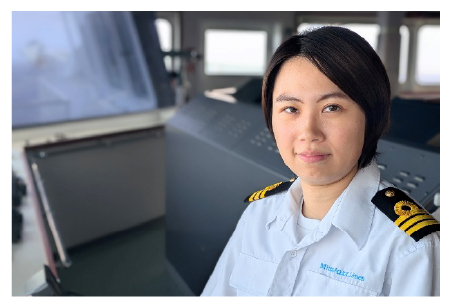
- Profession
-
Chief Officer
Kiyomi Shikata became a navigator ten years ago before becoming a chief officer. After spending seven years as a sailor on different types of vessels, she took over ship management in the head office. Three years later, she will return to duty at sea as a chief officer on an LNG carrier.
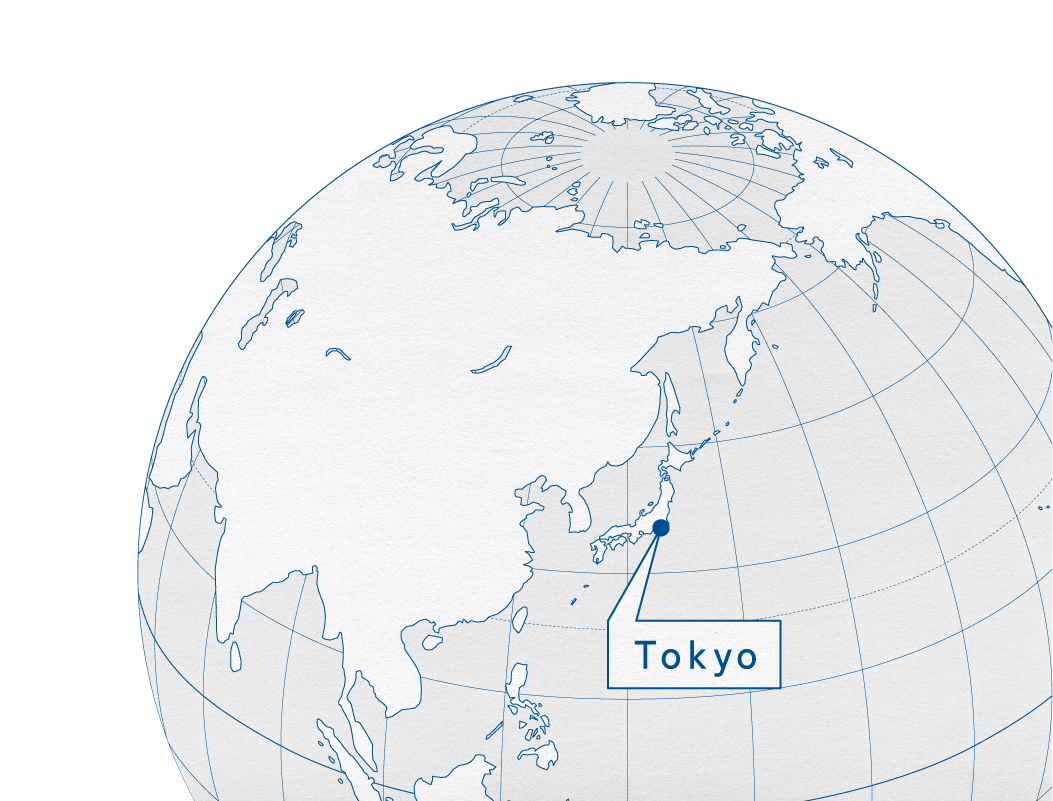
Working at Sea out of a Love for the Sea
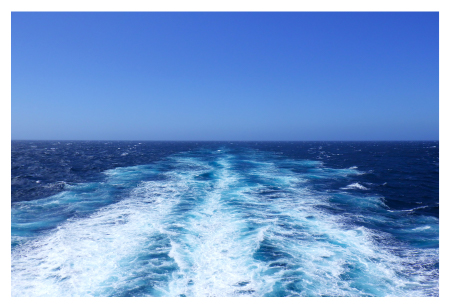
Why did you choose this job?
I graduated from a school that offered a qualification for a third-grade maritime officer, and then I got hired by MOL. Rather than a liking of ships, I wanted to do this job because of my interest in the sea. I think it all started from my lifelong love for marine life and aquariums. Also, my mom's parents lived on Sado Island, so I used to take a ferry to visit them several times a year. I remember watching the people working on the ferry and taking an interest in the fact that such jobs exist. But now that I'm a navigation officer, the sea has become my workplace, so to speak. It's very familiar. It's all around me while I work. It's always at my side.
Returning to the Sea as a Chief Officer
What does your work as a navigator involve?
Even if you're a navigator, your duties depend on your rank. When I became a chief officer three years ago, I was assigned to office work, and I started working on ship management at MOL LNG Transport. I'm about to return to sea, I'll be on an LNG carrier, but at first, I'll be focusing on taking over my predecessor’s role/work.
Until three years ago, I was a second officer, so at that time, I was drawing the course lines thinking about where to sail as a chief navigator. It's the second officer's job to produce a specific plan based on what the captain wants. The job also involves duties such as navigating the ship during what we call a "navigational watch" and performing maintenance and inspections on the navigational equipment.
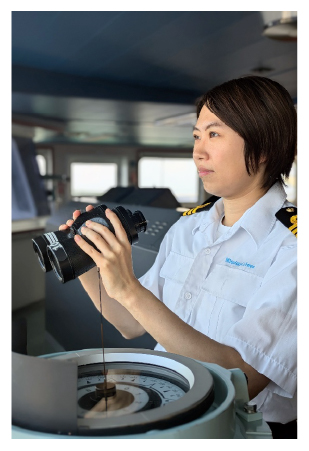
A Responsibility to Maintain Ship Safety
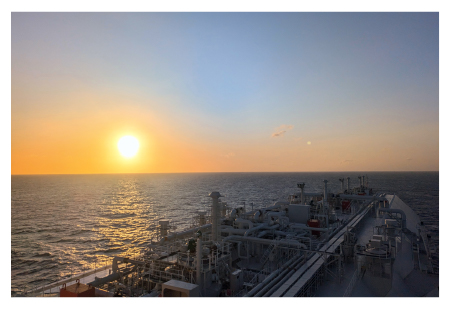

What changed when you became a chief officer?
For example, your hours for navigational watch change according to your rank. The crew can't work all the time without rest, so there are usually three teams working on a rotation. We split them into three four-hour shifts in the a.m. and the p.m. You work four hours and then get eight hours off, then this is repeated, meaning working eight hours in a day. We refer to the second officer's duty hours as "zero-four" because they work from midnight to 4 a.m. and then from noon to 4 p.m. When you become a chief officer, it's a "four-eight" shift because you work from 4 a.m. to 8 a.m. and from 4 p.m. to 8 p.m.
The reason why the chief officer takes these hours is that they're the most dangerous ones. Sunset and sunrise create the worst visibility, so an accident is more likely. That's why you assign a skilled chief officer. The second mate may have tougher hours in terms of the physical burden, but morning and evening entail greater risks than the middle of the night. I can feel the heavy weight of responsibility due to my upcoming assignment as a chief officer.
And if someone can't show up for a navigational watch, then someone else has to fill in. That being said, there is no replacement for the captain who oversees everything happening on the ship. So, we rarely get a day off when on board, only one or two days off a month, depending on the route.
A Navigator's Job: Safely Deliver Cargo
When do you feel your work is rewarding?
I feel it's rewarding the moment after we arrive at a port on schedule and finish unloading the cargo. The work during the voyage is important, but it's also a navigator's job to manage the cargo and unload it at the port. Since no two voyages are the same, I always feel some tenseness while working. Everything's different each time, such as the amount of cargo and where to load it. Of course, we have all the past data, so I look it over, but the situation's still not exactly the same. That's why listening to my experienced superiors is more important to me than the data. Chief officers and captains have a lot of experience, so I always ask for their advice when I have to make difficult decisions.

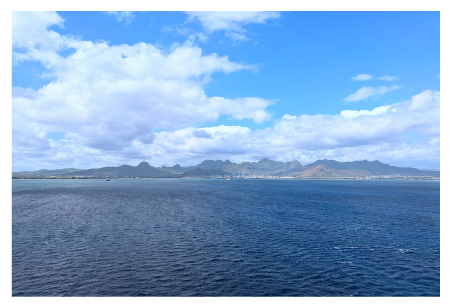
Unloading Cargo Also Matters to Ship Safety
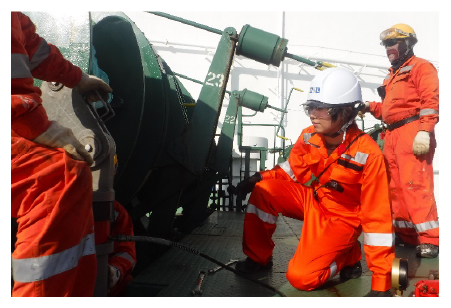
What's difficult about loading and unloading?
The work changes depending on what kind of cargo is on the ship. When it's an LNG carrier like the ships I used to primarily serve on, I would keep in close communication with the personnel at the receiving terminal to determine how fast to unload the gas. For container ships, a stevedore (a worker who handles ship cargo) would come to the port, so I would make sure the work is proceeding according to plan. And if it's a bulk carrier, it's the navigator's job to perform all the calculations and plan where to load and unload the cargo. The cargo must be unloaded in order while maintaining the ship's balance. If it doesn't happen in order, the ship could break. I'm not exaggerating. The hull could crack or otherwise take damage. Of course, we take the utmost care to make sure such things don't happen.
Need a Tablet, Speakers, and a Good Luck Charm
What do you always take with you
when you climb aboard?
Each voyage lasts four to five months, so I take quite a bit of luggage. I'm packing right now. If I have a week's worth of clothes, then I'll be just fine. I'll absolutely take my tablet since I often watch videos during breaks, and I've got to have speakers to listen to music. I also bring a good luck charm. I would bring a good luck charm for -safe navigation, or a good luck charm that wards off calamities related to directions since I go to various places around the globe. Konpira Shrine near MOL's headquarters has developed a reputation for offering protection on the seas.
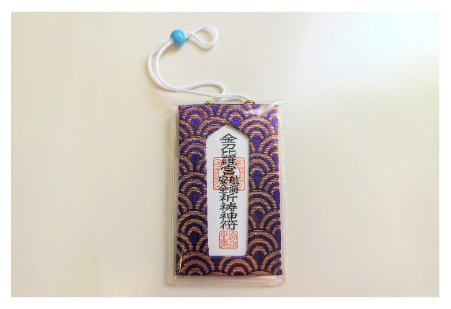
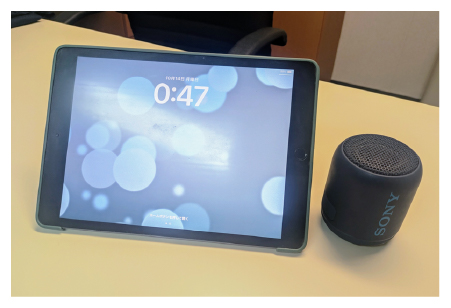
Teamwork for Safety
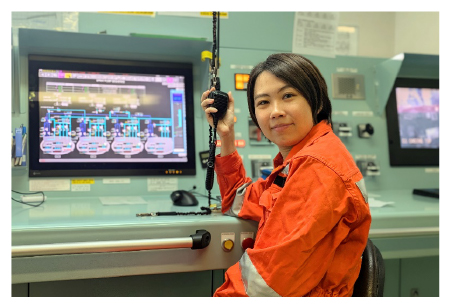
What are your dreams for the future? And say something for your colleagues working around the world.
The entire crew working on a ship, not only the navigators, are specialists. In my eyes, rather than my colleagues, they're all highly experienced superiors, so I have a lot to learn from them. Some remain on active duty even after they become old men, and I want to keep working with the sea as long as I'm healthy. My goal is to become a captain. Firstly, that sounds cool. (Laughs.) I've worked with very different kinds of captains, but I respect them all, from the ones who are calm in an emergency to those who set the mood on the ship with their great composure. I was in charge of ship management at the head office, so I want to become a captain who can work both at sea and on land. I also want to keep working with the team at MOL and ensure proper safety.





